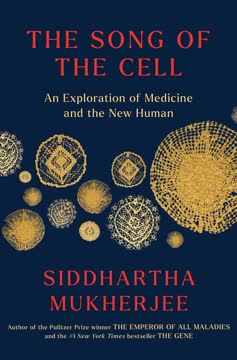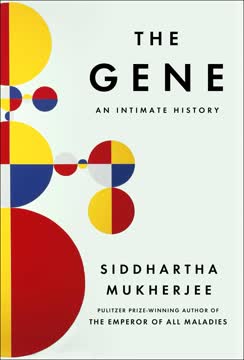Key Takeaways
1. Cells: The Elementary Particles of Life and Medicine
They had found, in Schwann’s words, the “elementary particles of organisms.”
Building blocks of life. All living organisms, from the simplest bacteria to the most complex animals, are composed of cells. These cells are not just structural units but also functional units, carrying out the processes necessary for life. Understanding cells is fundamental to understanding life itself.
Cellular medicine. The understanding of cells has revolutionized medicine, leading to the development of cellular therapies that target diseases at their source. These therapies range from drugs that alter cell behavior to the transplantation of modified cells.
New humans. Cellular engineering is creating "new humans" - individuals whose bodies have been rebuilt with modified cells to alleviate suffering and cure diseases. These advancements hold immense promise for the future of medicine.
2. The Discovery of Cells: A Gradual Unveiling
The world must be measured by eye.
Early microscopes. The invention of the microscope in the 17th century opened up a new world of the very small, revealing the existence of cells. Antonie van Leeuwenhoek, a Dutch cloth merchant, was among the first to observe living cells, which he called "animalcules."
Hooke's contribution. Robert Hooke, an English scientist, coined the term "cells" after observing the structure of cork under a microscope. While Hooke didn't fully understand the significance of his discovery, it marked the beginning of cell biology.
Challenges and skepticism. Early cell biology faced skepticism and resistance from the scientific community. It took time for the idea of cells as the fundamental units of life to gain acceptance.
3. Cell Theory: A Unifying Principle of Biology
No matter how we twist and turn, we shall eventually come back to the cell.
Schwann and Schleiden. Matthias Schleiden and Theodor Schwann proposed that all plant and animal tissues are made of cells. This proposition established a deep unity of organization and function running through living beings.
Virchow's contribution. Rudolf Virchow added to cell theory by stating that all cells come from other cells ("Omnis cellula e cellula"). He also proposed that diseases are the result of cellular dysfunction.
Tenets of cell theory:
- All living organisms are composed of one or more cells.
- The cell is the basic unit of structure and organization in organisms.
- All cells come from other cells.
- Normal physiology is the function of cellular physiology.
- Disease is the result of the disrupted physiology of the cell.
4. Germ Theory: Linking Microbes to Disease
Nay, we may yet carry it farther, and discover in the smallest particle of this little world a new inexhausted fund of matter, capable of being spun out into another universe.
Microbes and disease. Germ theory, which emerged in the 19th century, established that microbes are independent, living cells capable of causing human illnesses. This theory revolutionized medicine and public health.
Pasteur and Koch. Louis Pasteur and Robert Koch were key figures in the development of germ theory. They demonstrated the link between microbes and diseases such as anthrax, cholera, and tuberculosis.
Koch's postulates. Koch formulated a set of criteria to establish a causal relationship between a microbe and a disease. These postulates are still used today to identify the causes of infectious diseases.
5. The Organized Cell: Anatomy and Function
Each cell selects from its surrounding milieu, taking only what it needs.
Cellular autonomy. Cells are autonomous living units with their own internal organization and mechanisms for survival. This autonomy depends on the cell's interior anatomy.
Key organelles:
- Cell membrane: Defines the boundary of the cell and regulates the passage of molecules.
- Cytoplasm: The fluid inside the cell that contains organelles and other molecules.
- Mitochondria: The powerhouses of the cell, generating energy in the form of ATP.
- Endoplasmic reticulum: A network of membranes involved in protein synthesis and transport.
- Golgi apparatus: Modifies and packages proteins for secretion or delivery to other organelles.
- Nucleus: Contains the cell's genetic material (DNA).
Cytoskeleton. The cytoskeleton provides structural support and enables cell movement.
6. Cellular Communication: Orchestrating the Body
Every cell… derives its stimulus from another cell.
Intercellular communication. Cells communicate with each other through a variety of signals, including hormones, neurotransmitters, and cytokines. This communication is essential for coordinating the functions of tissues and organs.
Hormones. Hormones are chemical messengers that travel through the bloodstream and affect cells throughout the body. They play a crucial role in regulating metabolism, growth, and reproduction.
The heart. The heart is an organ where cellular communication is essential for coordinated function. Specialized cells generate electrical impulses that stimulate the heart muscle to contract, pumping blood throughout the body.
7. Stem Cells: Rejuvenation and Repair
As soon as the microscope was applied to the investigation of the structure of plants, the great simplicity of their structure… necessarily attracted attention.
Stem cell properties. Stem cells are unique cells that have the ability to self-renew and differentiate into specialized cell types. This makes them essential for tissue repair and regeneration.
Types of stem cells:
- Totipotent: Can give rise to all cell types, including embryonic and extraembryonic tissues.
- Pluripotent: Can give rise to all cell types in the body, but not extraembryonic tissues.
- Multipotent: Can give rise to a limited range of cell types within a particular tissue.
Hematopoietic stem cells. Hematopoietic stem cells (HSCs) are responsible for replenishing blood cells throughout life. Bone marrow transplantation, a cellular therapy, relies on the ability of HSCs to regenerate the entire blood system.
8. Cancer: Cellular Rebellion and Ecological Disruption
No matter how we twist and turn, we shall eventually come back to the cell.
Hallmarks of cancer. Cancer is characterized by uncontrolled cell growth and division. This is often due to mutations in genes that regulate the cell cycle, DNA repair, and cell death.
Tumor microenvironment. The tumor microenvironment plays a crucial role in cancer development and progression. Cancer cells interact with surrounding cells, including immune cells, blood vessels, and connective tissue.
Cancer stem cells. Some cancers contain a subpopulation of cells, called cancer stem cells, that have the ability to self-renew and differentiate, driving tumor growth and metastasis.
9. The Immune System: A Cellular Army
The world must be measured by eye.
Innate immunity. The innate immune system is the first line of defense against pathogens. It includes cells such as macrophages and neutrophils that recognize and engulf foreign invaders.
Adaptive immunity. The adaptive immune system is a more specific and targeted defense system. It involves B cells, which produce antibodies, and T cells, which kill infected cells.
T cell recognition. T cells recognize infected cells by detecting viral peptides presented on MHC molecules. This recognition is essential for eliminating pathogens and maintaining immune homeostasis.
10. The Future of Cellular Medicine: Rebuilding Humans
We shall always return to the cell.
Cellular engineering. Cellular engineering involves manipulating cells to create new therapies for diseases. This includes gene editing, cell transplantation, and immunotherapy.
Ethical considerations. As cellular medicine advances, it raises ethical questions about the limits of scientific intervention and the definition of what it means to be human. It is important to consider the potential risks and benefits of these technologies before they are widely adopted.
The promise of cellular therapies. Cellular therapies hold immense promise for the future of medicine. By harnessing the power of cells, we may be able to cure diseases, alleviate suffering, and improve the quality of human life.
Last updated:
FAQ
What's The Song of the Cell about?
- Exploration of Cell Biology: The book delves into the discovery that all living organisms are composed of cells, which function together to form tissues, organs, and systems.
- Impact on Medicine: It highlights how cellular understanding has revolutionized medicine, leading to treatments like immunotherapy and gene editing.
- Historical Context: The narrative spans from the 17th century to modern advancements, showcasing key figures and milestones in cellular medicine.
Why should I read The Song of the Cell?
- Comprehensive Overview: The book makes complex cell biology concepts accessible, connecting historical discoveries with modern advancements.
- Relevance to Medicine: It is timely for those interested in the future of medicine, given the rise of cellular therapies and gene editing.
- Engaging Narrative: Mukherjee weaves personal stories and patient experiences, making the scientific discourse both informative and emotionally resonant.
What are the key takeaways of The Song of the Cell?
- Cells as Fundamental Units: Understanding cells is crucial for grasping human biology and disease.
- Cellular Pathology: The book emphasizes the role of cellular dysfunction in diseases and therapeutic effects.
- Future of Medicine: Advancements in cellular manipulation, like gene editing, will redefine health and treatment.
What are the best quotes from The Song of the Cell and what do they mean?
- "The world must be measured by eye.": Highlights the importance of observation in scientific discovery.
- "Life not so much 'is' but 'becomes.'": Emphasizes the dynamic nature of life and cellular processes.
- "Omnis cellula e cellula.": A foundational principle of cell theory, meaning "all cells come from cells."
How does The Song of the Cell connect cell biology to medicine?
- Cellular Understanding: The book illustrates how cellular mechanisms have led to medical advancements like targeted cancer therapies.
- Case Studies: Mukherjee shares patient stories to demonstrate the transformative impact of cellular therapies.
- Future Implications: Discusses emerging technologies like CRISPR and their potential to revolutionize medicine.
What is the significance of stem cells in The Song of the Cell?
- Regenerative Potential: Stem cells can differentiate into various cell types, crucial for regenerative medicine.
- Historical Context: The book traces the history of stem cell research and its therapeutic uses.
- Ethical Implications: Mukherjee addresses ethical dilemmas, particularly concerning embryonic stem cells.
How does The Song of the Cell address the immune system's function?
- First Line of Defense: The immune system is described as the body’s primary defense against pathogens.
- Balance of Activation and Tolerance: Emphasizes the importance of maintaining immune balance to prevent autoimmunity.
- Advancements in Immunotherapy: Discusses breakthroughs in cancer treatment through enhanced immune responses.
What role do T cells play in the immune system as described in The Song of the Cell?
- Recognition of Self and Non-Self: T cells are crucial for distinguishing between the body’s own cells and foreign invaders.
- Types of T Cells: Includes CD4 helper T cells and CD8 killer T cells, each with specific immune functions.
- Therapeutic Applications: Highlights the potential of T cell therapies, such as CAR T cell therapy, in treating cancers.
What advancements in cellular therapies are discussed in The Song of the Cell?
- Gene Editing Technologies: Covers CRISPR and its applications in correcting genetic mutations.
- Stem Cell Therapies: Discusses therapies for blood disorders and degenerative diseases.
- Ethical Considerations: Urges caution and responsibility in the application of these advancements.
How does The Song of the Cell explore the concept of cellular citizenship?
- Virchow’s Theory: Discusses the idea that the body is a cell state where every cell is a citizen.
- Implications for Health: Understanding cellular citizenship can lead to better medical approaches.
- Social and Ethical Dimensions: Connects cellular cooperation to broader societal collaboration in health.
What challenges does The Song of the Cell identify in understanding cellular functions?
- Complexity of Interactions: Cellular interactions are intricate, requiring ongoing research.
- Ethical Considerations: Highlights ethical dilemmas in stem cell research and genetic manipulation.
- Limitations of Knowledge: Acknowledges gaps in understanding, underscored by the COVID-19 pandemic.
How does The Song of the Cell relate to the ongoing COVID-19 pandemic?
- Impact on Immune Response: Discusses the complexities of the immune system's response to viral infections.
- Lessons Learned: Highlights gaps in cellular biology knowledge revealed by the pandemic.
- Role of Research: Advocates for continued research into cellular functions to address health crises.
Review Summary
The Song of the Cell is praised for its comprehensive exploration of cell biology, blending history, science, and personal anecdotes. Readers appreciate Mukherjee's engaging writing style and ability to explain complex topics. The book covers a wide range of subjects, from cellular discovery to modern medical applications. While some find certain sections dense or repetitive, most reviewers commend the author's expertise and storytelling. The book is seen as an informative and thought-provoking read, particularly for those interested in science and medicine.
Similar Books

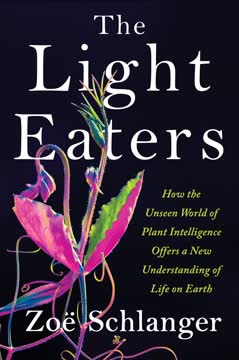




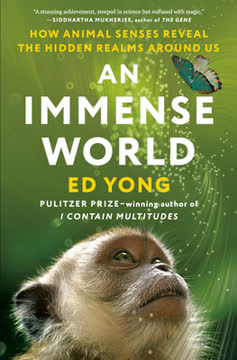
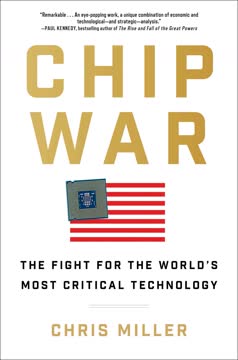


Download PDF
Download EPUB
.epub digital book format is ideal for reading ebooks on phones, tablets, and e-readers.
